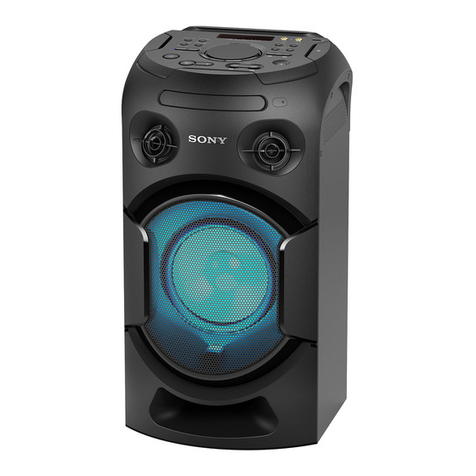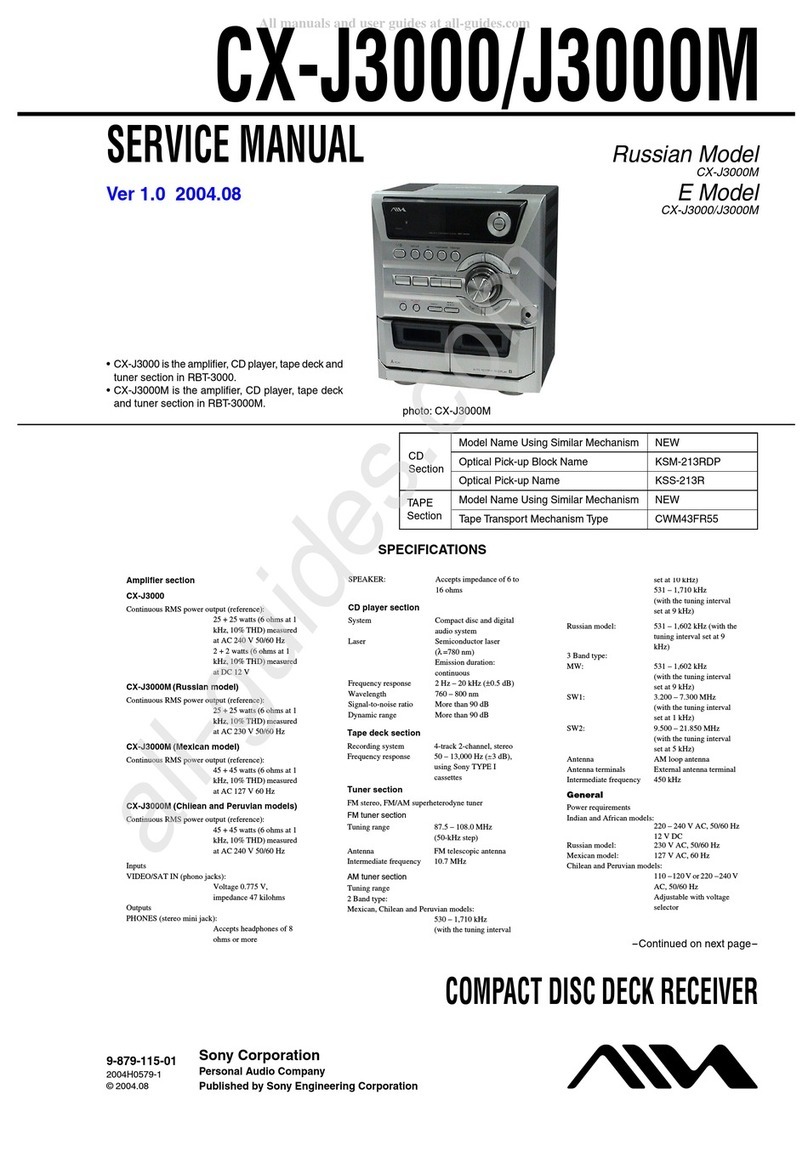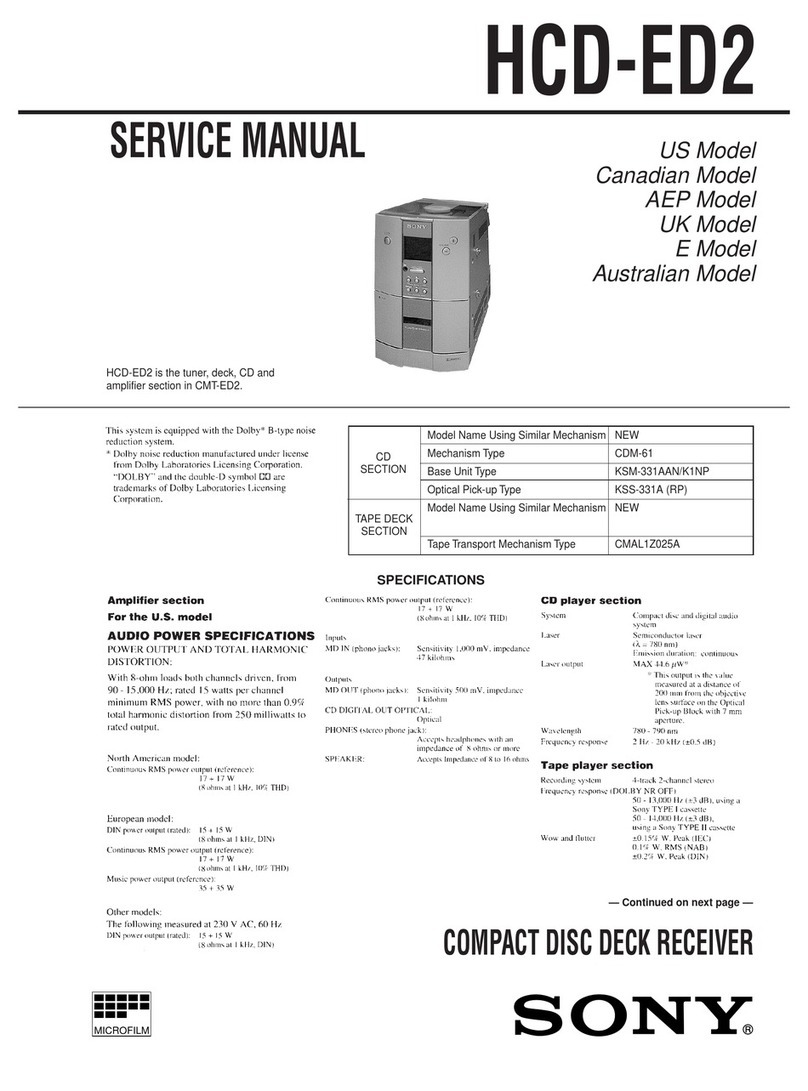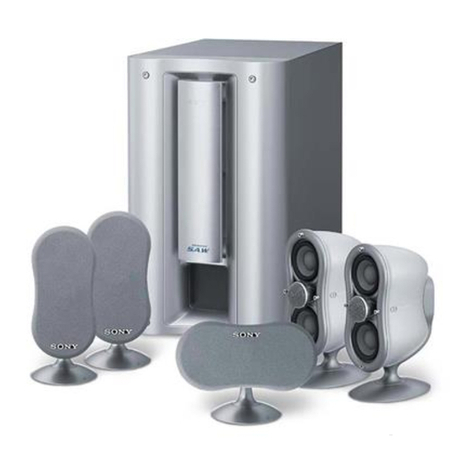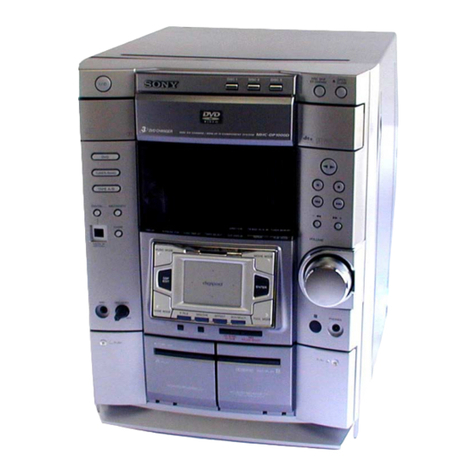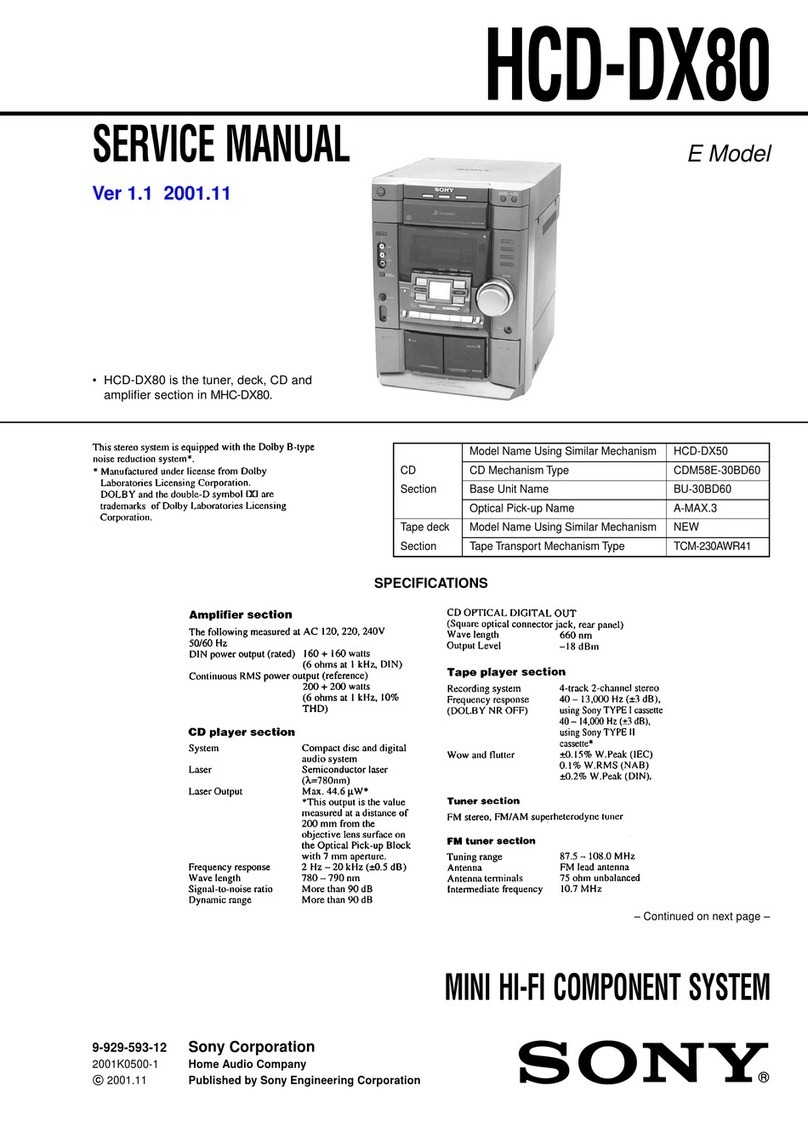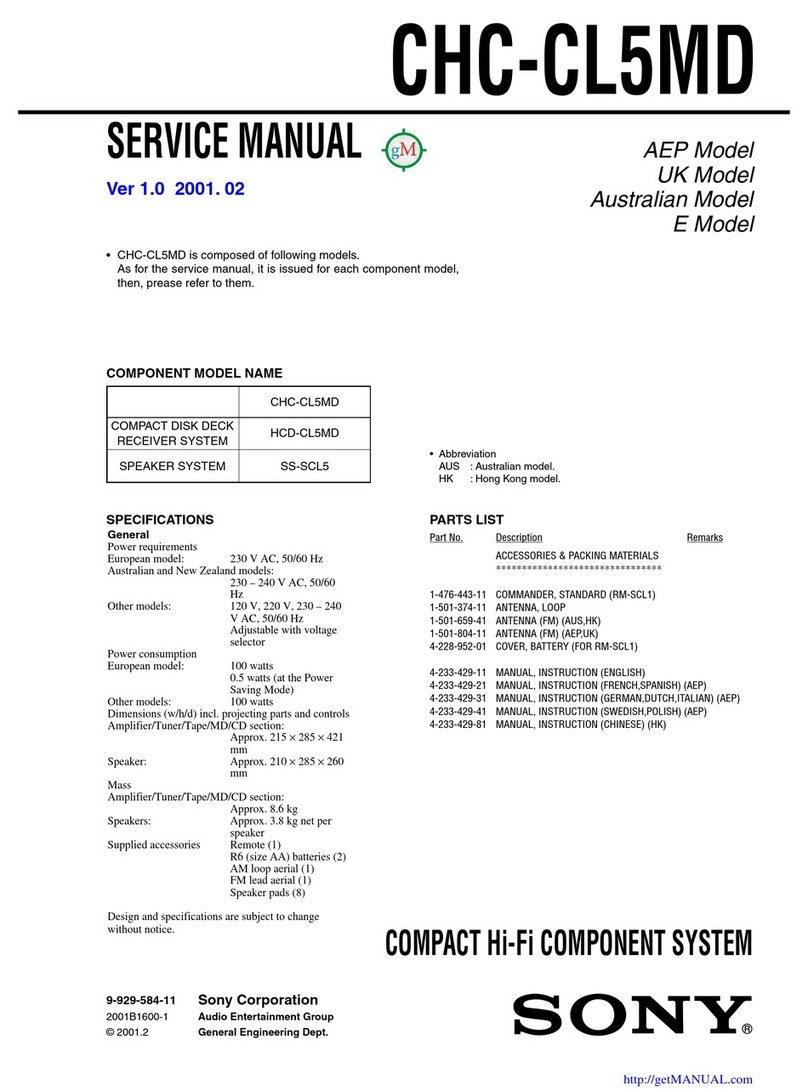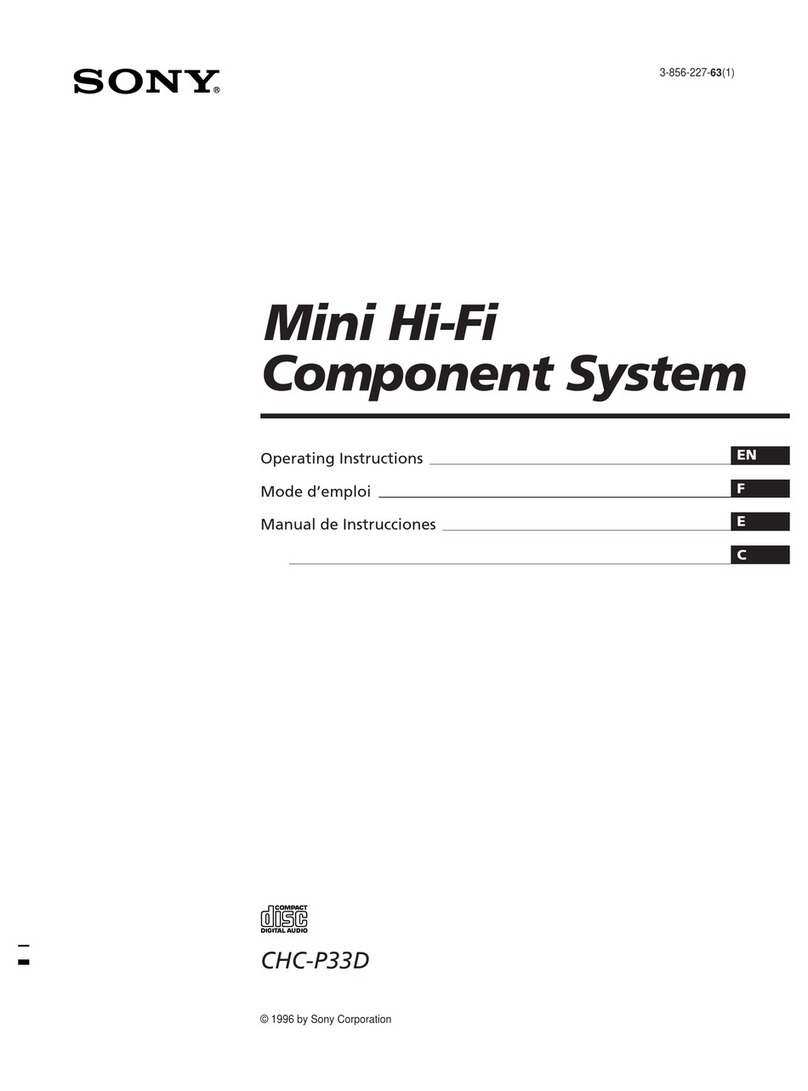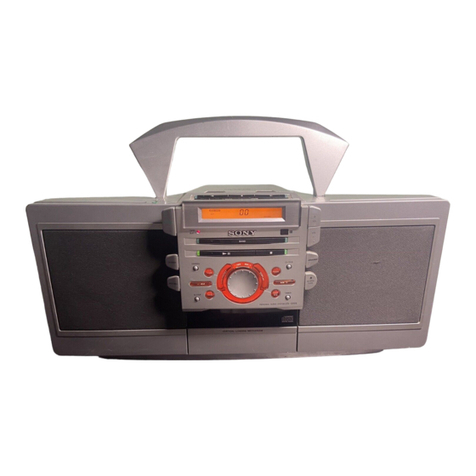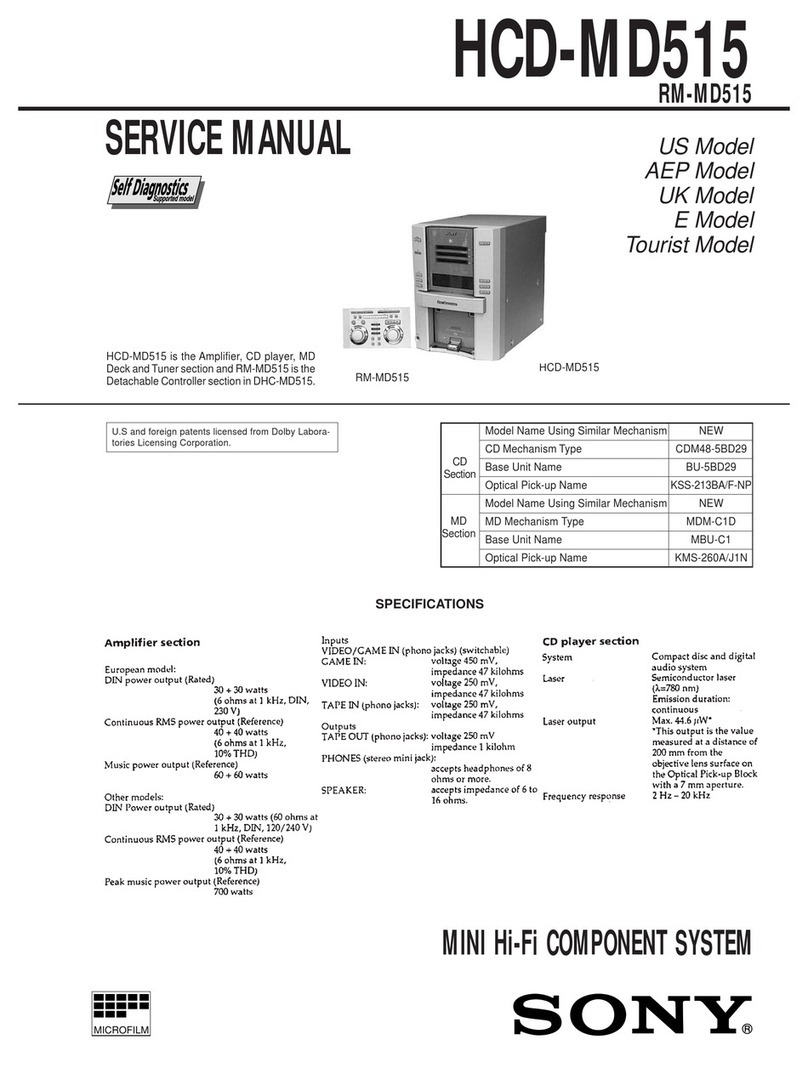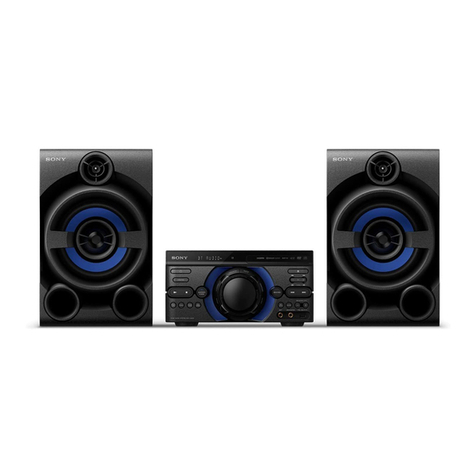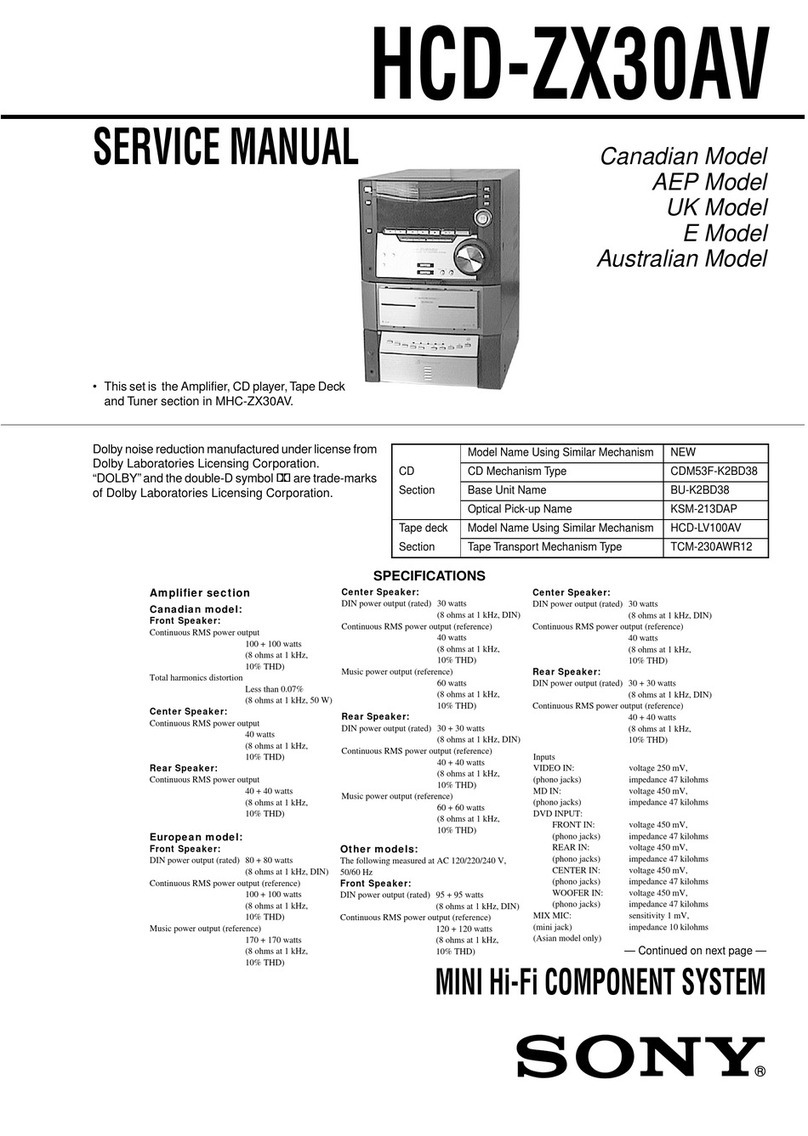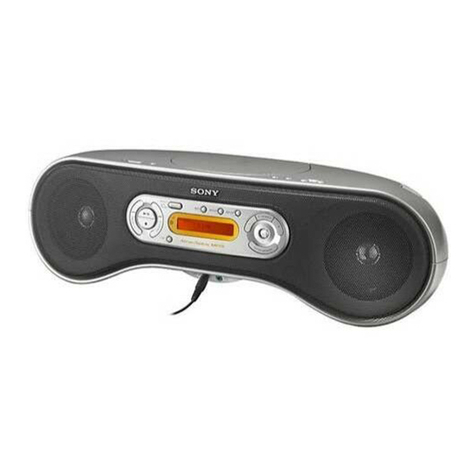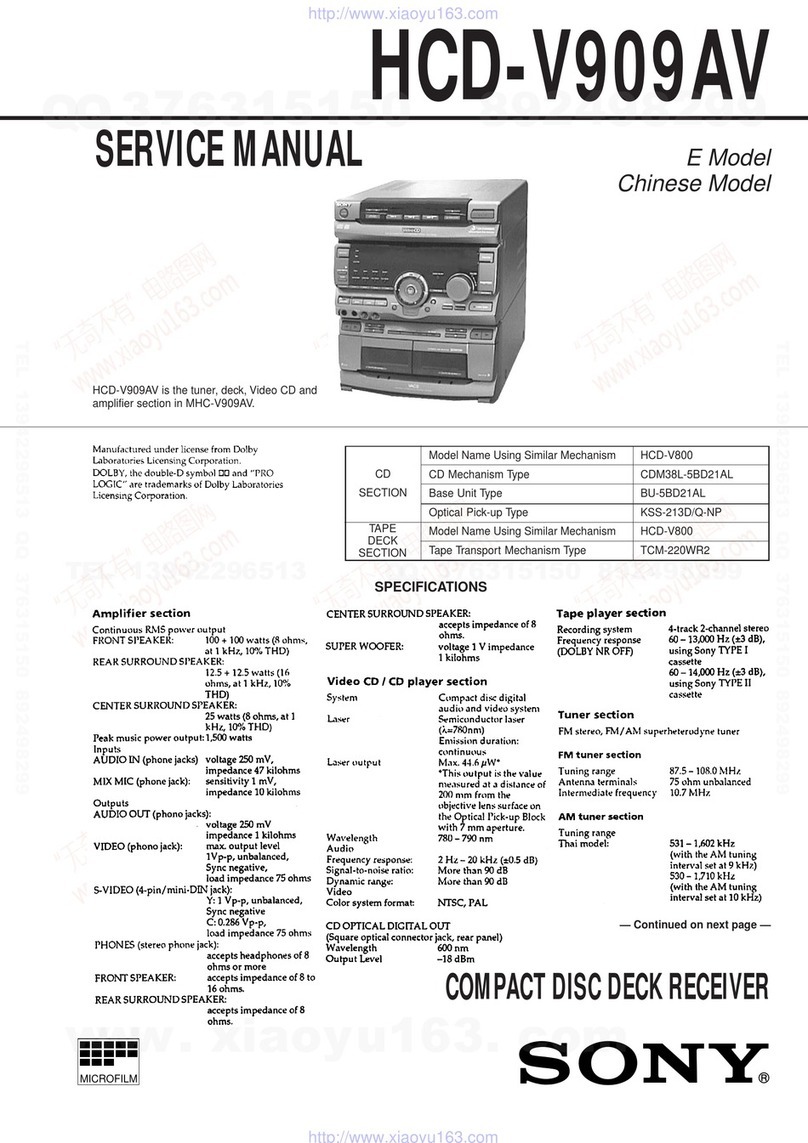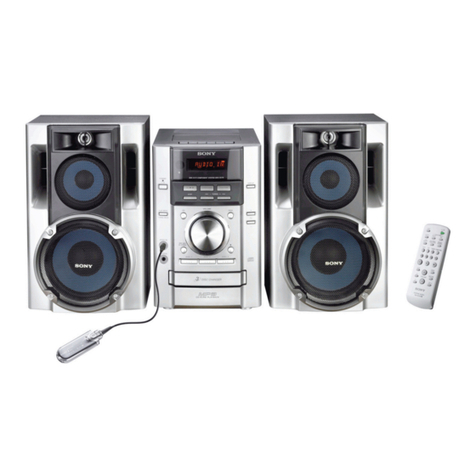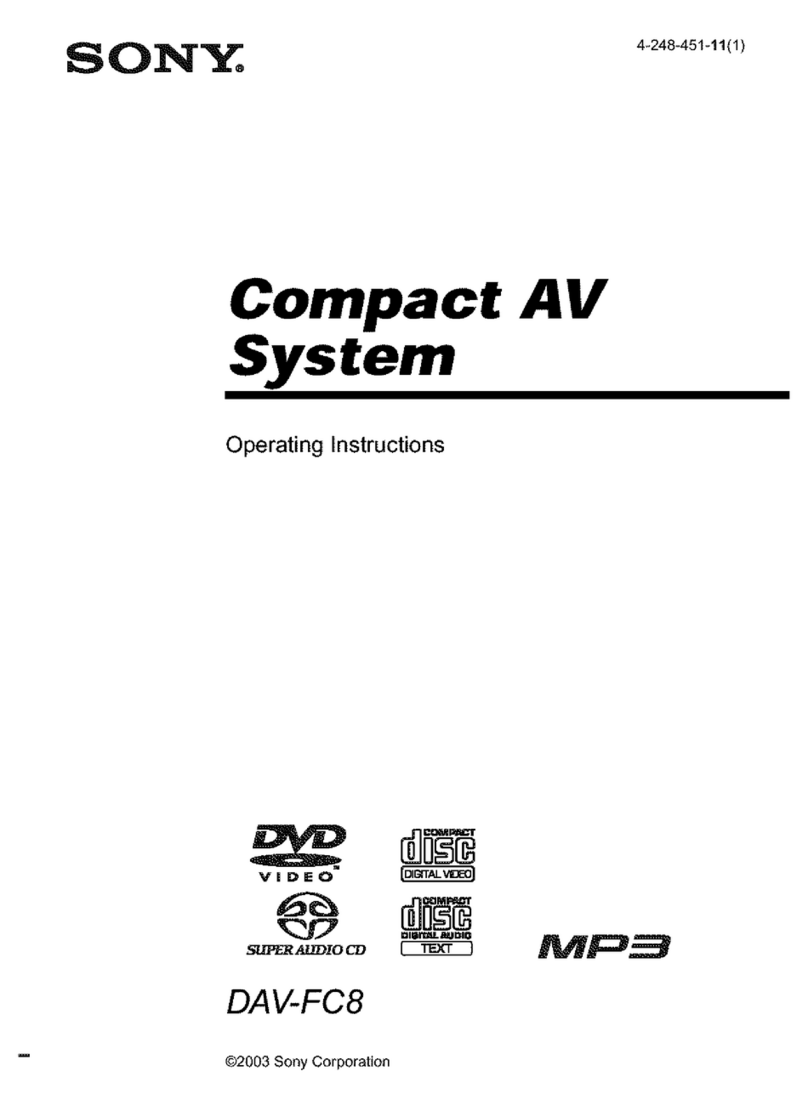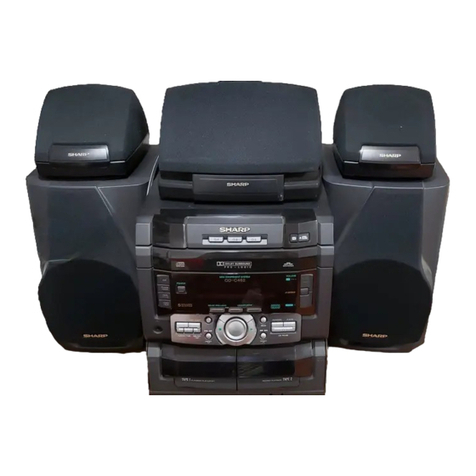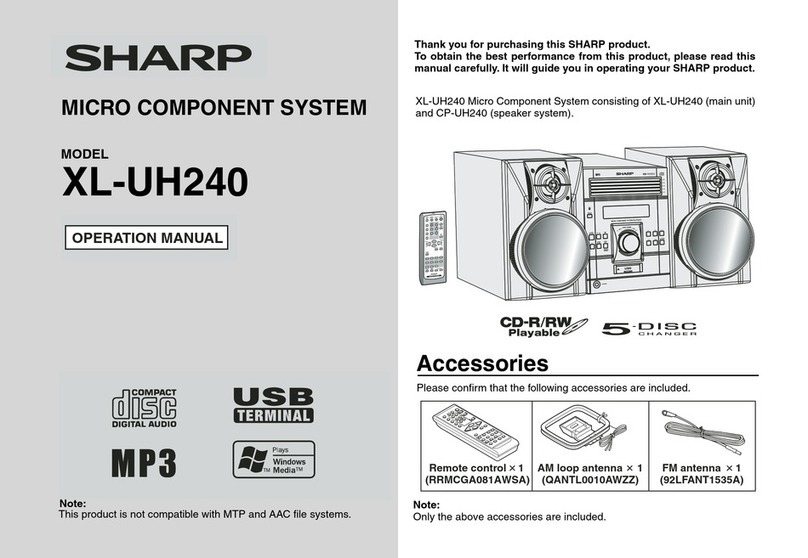
3
HCD-GN1100D
1. SERVICING NOTES ................................................ 4
2. GENERAL ................................................................... 5
3. DISASSEMBLY
3-1. Disassembly Flow ........................................................... 7
3-2. Case ................................................................................. 8
3-3. Loading Panel.................................................................. 8
3-4. Tuner Pack ....................................................................... 9
3-5. DVD Mechanism Deck ................................................... 9
3-6. Front Panel Assy .............................................................. 10
3-7. Tape Mechanism Deck, MIC Board ................................ 10
3-8. CD-SW Board ................................................................. 11
3-9. PANEL Board, FUNCTION Board, JOG Board............. 11
3-10. KARAOKE Board, VIDEO Board, DMB16 Board........ 12
3-11. Back Panel ....................................................................... 12
3-12. PRIMARY Board, EFFECTOR Board............................ 13
3-13. Power AMP PC Board Assy, MAIN Board ..................... 13
3-14. SURROUND Board, PA Board ....................................... 14
3-15. Power Transformer (T1200) ........................................... 14
3-16. DRIVER Board, SW Board............................................. 15
3-17. DVD Assy........................................................................ 15
3-18. Optical Pick-up................................................................ 16
3-19. SENSOR Board ............................................................... 16
3-20. MOTOR (TB) Board ....................................................... 17
3-21. MOTOR (LD) Board....................................................... 17
4. TEST MODE ............................................................... 18
5. MECHANICAL ADJUSTMENTS......................... 23
6. ELECTRICAL ADJUSTMENTS .......................... 23
TABLE OF CONTENTS
7. DIAGRAMS .......................................................... 25
7-1. Block Diagram – RF Section –....................................... 27
7-2. Block Diagram – Video Section – ................................... 28
7-3. Block Diagram – Tape/Tuner Section – .......................... 29
7-4. Block Diagram – Main Section – .................................... 30
7-5. Block Diagram – AMP Section – .................................... 31
7-6. Block Diagram – Display/Power Section –..................... 32
7-7. Printed Wiring Board – DMB16 Board (SideA) – ......... 33
7-8. Printed Wiring Board – DMB16 Board (Side B) – ........ 34
7-9. Schematic Diagram – DMB16 Board (1/4) –................ 35
7-10. Schematic Diagram – DMB16 Board (2/4) –................ 36
7-11. Schematic Diagram – DMB16 Board (3/4) –................ 37
7-12. Schematic Diagram – DMB16 Board (4/4) –................ 38
7-13. Printed Wiring Boards – CD Mechanism Boards – ....... 39
7-14. Schematic Diagram – CD Mechanism Boards – ........... 40
7-15. Printed Wiring Board – MAIN Board – .......................... 41
7-16. Schematic Diagram – MAIN Board (1/5) – ................... 42
7-17. Schematic Diagram – MAIN Board (2/5) – ................... 43
7-18. Schematic Diagram – MAIN Board (3/5) – ................... 44
7-19. Schematic Diagram – MAIN Board (4/5) – ................... 45
7-20. Schematic Diagram – MAIN Board (5/5) – ................... 46
7-21. Printed Wiring Board – PANEL Board – ........................ 47
7-22. Schematic Diagram – PANEL Board – .......................... 48
7-23. Printed Wiring Boards – CD-SW, JOG, FUNCTION
And MIC Boards – .......................................................... 49
7-24. Schematic Diagram – CD-SW, JOG, FUNCTION
And MIC Boards – .......................................................... 50
7-25. Printed Wiring Board – PA Board – ................................ 51
7-26. Schematic Diagram – PA Board – .................................. 52
7-27. Printed Wiring Board – SURROUND Board –............... 53
7-28. Schematic Diagram – SURROUND Board (1/2) –........ 54
7-29. Schematic Diagram – SURROUND Board (2/2) – ....... 55
7-30. Printed Wiring Board – EFFECTOR Board – ................. 56
7-31. Schematic Diagram – EFFECTOR Board –................... 57
7-32. Printed Wiring Board – VIDEO Board – ........................ 58
7-33. Schematic Diagram – VIDEO Board – .......................... 59
7-34. Printed Wiring Boards – Power Section –....................... 60
7-35. Schematic Diagram – Power Section – .......................... 61
7-36. Printed Wiring Board – KARAOKE Board – ................. 62
7-37. Schematic Diagram – KARAOKE Board – ................... 62
7-38. IC Pin Function Description............................................ 65
8. EXPLODED VIEWS
8-1. Case, Back Panel Section ................................................ 75
8-2. Front Panel Section-1 ...................................................... 76
8-3. Front Panel Section-2 ...................................................... 77
8-4. Chassis Section................................................................ 78
8-5. DVD Mechanism Section-1 (CDM74HF-DVBU101).... 79
8-6. DVD Mechanism Section-2 (CDM74HF-DVBU101).... 80
9. ELECTRICAL PARTS LIST .................................. 81
